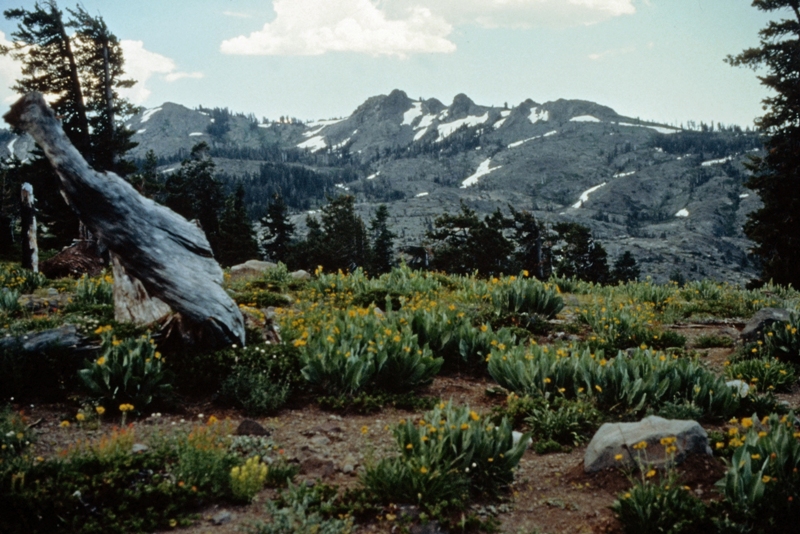
PROTECT OUR OPEN SPACES
The Sierra Nevada Group advocates for the acquisition and protection of environmentally significant lands, for the use of renewable energy resources and reduction of greenhouse gases, for improved air and water quality, and for water conservation.
LOCAL CONSERVATION ISSUES
The Sierra Nevada Group is actively involved in the following local and regional conservation issues. Our Group sponsors conservation-themed outings to inform Sierra Club members and the general public about the current status of plans and activities affecting these issues.
1) Opposing inundation of six free-flowing miles of the Bear River which is threatened by a dam proposal by the Nevada County Irrigation District (NID).
2) Advocating for zero net energy solutions for all new housing developments in Nevada County and its cities and encouraging compact, walkable communities with open space.
3) Advocating for the designation as wilderness for the Grouse Lakes, Castle Peak, Duncan Canyon and Black Oak roadless areas and extensions for the Granite Chief wilderness.
4) Advocating for designation as Wild and Scenic for Independence Creek, Sagehen Creek and the Downie River and its tributaries.
5) Protecting the Spenceville Wildlife and Recreation Area.
LOCAL ENVIRONMENTAL/CONSERVATION RESOURCES
Idaho-Maryland Mine

Stop the Idaho-Maryland Mine
from reopening in Grass Valley:
Go To the MineWatch Campaign Website https://www.minewatchnc.org
Centennial Dam
The Foothills Water Network, a coalition of conservation and recreation organizations, submitted a joint water rights protest to the State Water Resources Control Board (SWRCB) demanding that Nevada Irrigation District’s (NID) water rights application for the proposed Centennial Dam be denied based on environmental, public interest and legal grounds.
“Centennial Dam’s alleged benefits are unlikely to justify the financial and environmental cost,” said Otis Wollan, President of the American River Watershed Institute and a former member of the Placer County Water Agency board of directors, asserting that the dam will have negative environmental impacts on the Bear and Yuba River watersheds and surrounding communities. “Rather than build a new dam, NID should maximize the use of its existing resources and infrastructure.”
NID’s proposal to build a new 110,000 acre-foot reservoir with a 275 foot-tall dam on the Bear River would inundate six miles of the Bear River, completely flooding the Bear Campground, more than 25 homes and 120 parcels, and Dog Bar Bridge, the only crossing of the Bear River between Highway 49 and Highway 174.
Be Skeptical of NID Scare Tactics
Be Skeptical of NID Scare Tactics
By Peter Van Zant
Nevada Irrigation District (NID) still hasn’t dropped its ill-conceived plan to build Centennial Dam on the Bear River. They have yet to demonstrate the need for the project or explained how they plan to pay for the dam’s construction. And there is no assurance that the ratepayers won’t get stuck with the $1 billion tab either.
In the face of mounting public opposition, NID resorts to using scare tactics. The latest is NID’s claim that someone is going to take our water if we don’t ‘use’ it. However, California water rights laws guar-antee that NID will always have priority over any other water agency for the rights to the water needed in the NID service area.
NID ratepayers need to ask the following questions:
Will hydropower sales pay for the dam? NID no longer plans to install hydropower at Centennial. But premium hydro-power revenues will eventually dissipate due to the ongoing construction of alternative electric power storage like PG&E’s recently commissioned Browns Valley battery installation and many others coming on line. Why do you think PG&E wants to sell its local hydro operations to NID?
How much more water do we need? According to NID’s own reports and local general plans there is very little additional water needed locally (including Placer County). And there’s really no new local wa-ter need if NID would just lead us to take the modest steps toward wiser water use being implemented elsewhere throughout the State. The number of new rate payers will not be enough to service a new $1 billion debt for the dam.
How will the dam be paid for? Most likely NID will need to finance the $1 billion dam project. So what will NID do? Sell water. That’s right, the huge debt needed to build Centennial will require NID to sell our water out of the area to water the lush lawns of Los Angeles and other Southern California desert towns.
Without the dam debt our water will be safe. The real threat is if NID finances Centennial Dam with out of district water sales. A water sale contract automatically removes county of origin protections for the water sold. When it's gone, it is gone.
Our complex California water rights laws give NID first rights to this water. No one will ever ‘take’ our water. NID has a variety of water rights, many of which are pre-1927 that cannot be affected by any other filings now or in the future. Also, if a true local need for more water emerges in the future, NID gets first take because of laws passed after 1927 to protect watershed areas like NID’s from out of area water grabs.
Don’t be scared. Be skeptical.
Peter Van Zant- Peter is a former Nevada County Supervisor, a former President of the SYRCL board of directors, and a SYRCL Dam Watchdog. He lives in Nevada City with his wife Mary and three goofy pets.